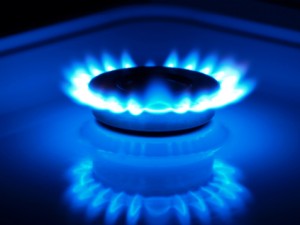 Natural gas rose more than 2.5% on Monday as forecasters predicted warm weather in key U.S. consuming areas throughout most of October, boosting demand prospects for the power-station fuel. Gains however remained limited after output in the Gulf of Mexico recovered and amid expectations for a higher than the average increase in inventories last week.
Natural gas rose more than 2.5% on Monday as forecasters predicted warm weather in key U.S. consuming areas throughout most of October, boosting demand prospects for the power-station fuel. Gains however remained limited after output in the Gulf of Mexico recovered and amid expectations for a higher than the average increase in inventories last week.
On the New York Mercantile Exchange, natural gas for delivery in November rose by 2.87% to $3.607 per million British thermal units at 14:23 GMT. Prices held in range between days high and low of $3.614 and $3.520 per mBtu respectively. The fuel surged 0.3% on Friday but settled the week 2.1% lower after losing 2.7% in the preceding five-day period.
Gas advanced on Monday despite the recovery of Gulf output and expectations for a higher than the average stockpiles increase as weather agencies predicted above-usual temperatures in some key consuming areas in the U.S. According to MDA Weather Services in Gaithersburg, Maryland, the eastern and central U.S. will have warmer-than-average weather through October 21, boosting demand for the power-plant fuel.
When warm weather is expected, natural gas surges as increased electricity demand to power air-conditioning calls for more supply of the fuel, which is used for a quarter of the U.S. electricity generation. According to the Energy Information Administration, power generation accounts for 32% of U.S. gas demand and 50% of U.S. households use gas for heating.
Phil Flynn, a senior market analyst at Price Futures Group in Chicago, said for Bloomberg: “Temperatures have been above normal, which is supportive for gas demand. Traders are still pricing in some of the production lost because of the storm.”
Evacuation of personnel from platforms in the Gulf of Mexico due to tropical storm Karen led to a 48% reduction in U.S. natural gas output over the weekend. Producers however began returning staff to their workplaces after the National Hurricane Center downgraded Karen to a tropical depression on Saturday. According to the Energy Information Administration, the Gulf accounts for 23% of U.S. crude production, 45% of petroleum refining capacity and 5.6% of domestic natural gas output.
Market players will also be keeping a close watch on this weeks inventories data. The fuel plunged last Thursday after the Energy Information Administration reported that U.S. gas stockpiles rose by 101 billion cubic feet in the week ended September 27, underperforming analysts’ projections for a surge in the range between 82 and 100 billion cubic feet. Last week’s build was also well above last year’s 77 billion gain during the comparable week and the five-year average increase of 82 billion cubic feet.
Total gas held in underground U.S. storage hubs equaled 3.487 trillion cubic feet, which was 4.3% below last year’s inventories of 3.642 trillion. The surplus over the five-year average stocks of 3.438 trillion cubic feet widened to 1.4% after rising to 0.9% in the preceding week.
Early injection estimates for this weeks build data range between 90 billion and 103 billion cubic feet, compared to the five-year average increase of 84 billion cubic feet. During the comparable week last year, U.S. natural gas inventories rose by 73 billion cubic feet.





